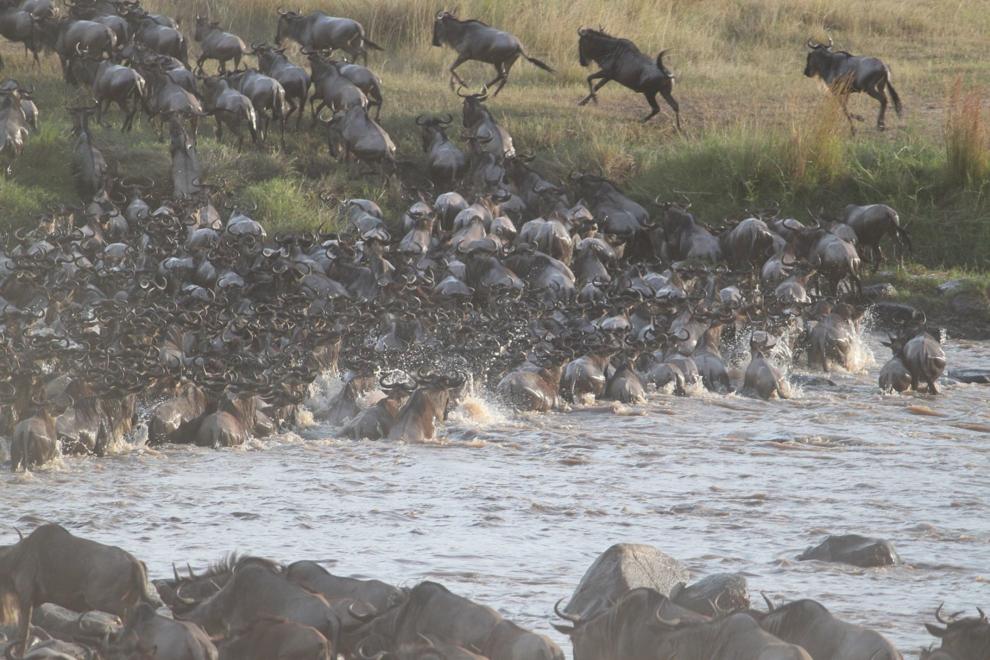6 Must Do Things in Bwindi Forest
Bwindi Impenetrable National Park is one of the must visit places in Africa. Located in South Western Uganda, Bwindi is an ancient rain forest that survived the ice age and it is very famous for being a home for almost half of the world’s remnant population of the mountain gorillas. Travelers travel from the whole world to meet the rare and endangered mountain gorillas in the impenetrable jungles of Bwindi. However despite being known for gorilla trekking, there are many other exciting things to do in the park and here are 6 must do things that you probably be not knowing about.
1. Gorilla Tracking
Gorilla Tracking is a captivation and unforgettable experience which more than repays the effort needed to reach Bwindi and to trek through the forest. Gorilla tracking can be challenging and one needs to be reasonably fit before undertaking to venture into the activity. Registration and briefing at Buhoma, Ruhija, Nkuringo and Rushaga visitor receptions commences at 0730 hours with general briefings conducted at 0800 hours. Gorilla tracking starts at 8:30am and can last from a few hours to a whole day depending on where the gorillas were left the previous day.
Bwindi Impenetrable Forest has gorilla tracking as the major tourist attraction with 4 gorilla tracking trailheads. Visitors can track one of the gorilla families for which we have obtained permits for you. More gorilla families have been habituated for visitors, which means that there are over 100 daily gorilla permits available in Bwindi Impenetrable forest. Wear the required clothing for gorilla trekking within the forest. Time taken searching for these gentle giants ranges from 2 to 8 hours depending on where the gorillas were left the previous day. Bwindi Impenetrable Forest is the best safe, secure park in Africa for gorilla trekking, plus the added benefit of lower permit prices.
2. Gorilla Habituation Experience in Rushaga
The gorilla habituation experience differs from gorilla tracking that is to say for gorilla tacking, visitors are strictly given 1 hour to spend with the gorillas whereas in gorilla habituation experience visitors are given a maximum of 4 hours to spend much more time with the gorillas. There is a great opportunity for the visitors to know more about gorillas because the researchers are always there to give as much information as you may need within those 4 hours your to spend with the gorillas. You have the choice of budget, mid-range and luxury lodging and can stay either in Rushaga or scenic Nkuringo area of Bwindi Impenetrable Forest.
3. The Batwa Experience
The Batwa Experience in the Buhoma area and the Buniga Forest Walk, near Southern Bwindi, give you a glimpse into the lives and traditions of the Batwa pygmies. It also restores a bit of their dignity and keeps their cultural practices alive to be passed on to future generations. The Batwa people are pygmies and were the first inhabitants of years; they were hunter-gatherers and lived in the forests of southwest Uganda and beyond. They left a small ecological footprint on the forest and lived in harmony with nature.
4. Hikes and Trails
Forest trails in the park lead to various attractions including rivers, waterfalls, swamps and a high level of wildlife concentration. Trails can be found in Buhoma, Ruhija, Rushaga and Nkruringo. Some of the trails are for birding hikes, while others lead or focus on the beautiful scenery of Bwindi Impenetrable National Park. A short drive north to Buhoma sits on the Congo border offering wonderful hikes along the hill crests and rivers and rivers to discover waterfalls, glorious views and the traditional lifestyle and folklore of the Kigezi people.
5. Birding in Bwindi Impenetrable Forest
Birding is another attraction that provides great opportunities to see various Albertine rift endemics such as the short-tailed warbler. A 6hour bamboo trail leads to Rwamunyonyi peak, at 2607m, is the highest peak and notable spot for birding. While a 3 hour descends to Mubwindi swamp could lead a visitor to endemic and localized African green broadbill. Bwindi Impenetrable forest is one of the prime birding destinations in Africa. There are over 347 species of forest birds recorded in the park. Tourists have got a wide platform to spot out some of Africa’s rarest birds and at the same time, they can track mountain gorillas and enjoy other nearby prime birding spots.
6. Mountain Bike Rides in Buhoma and other areas of the park.
Ride for a woman which is a community support group offers mountain bike rentals and guided bike in and around Bwindi Impenetrable Forest in the Buhoma area of the park. You can even do the village walk on a bike with a guide. There are Birding Bike Rides, or simply a ride into the forest such as the Ivy River Trail. The average Bike Ride is 3 hours or longer in length with much to see along the trail or road. The guides are all well-trained, some specialize in birding, others in culture but all known Bwindi Impenetrable Forest which they all love and want to conserve.



